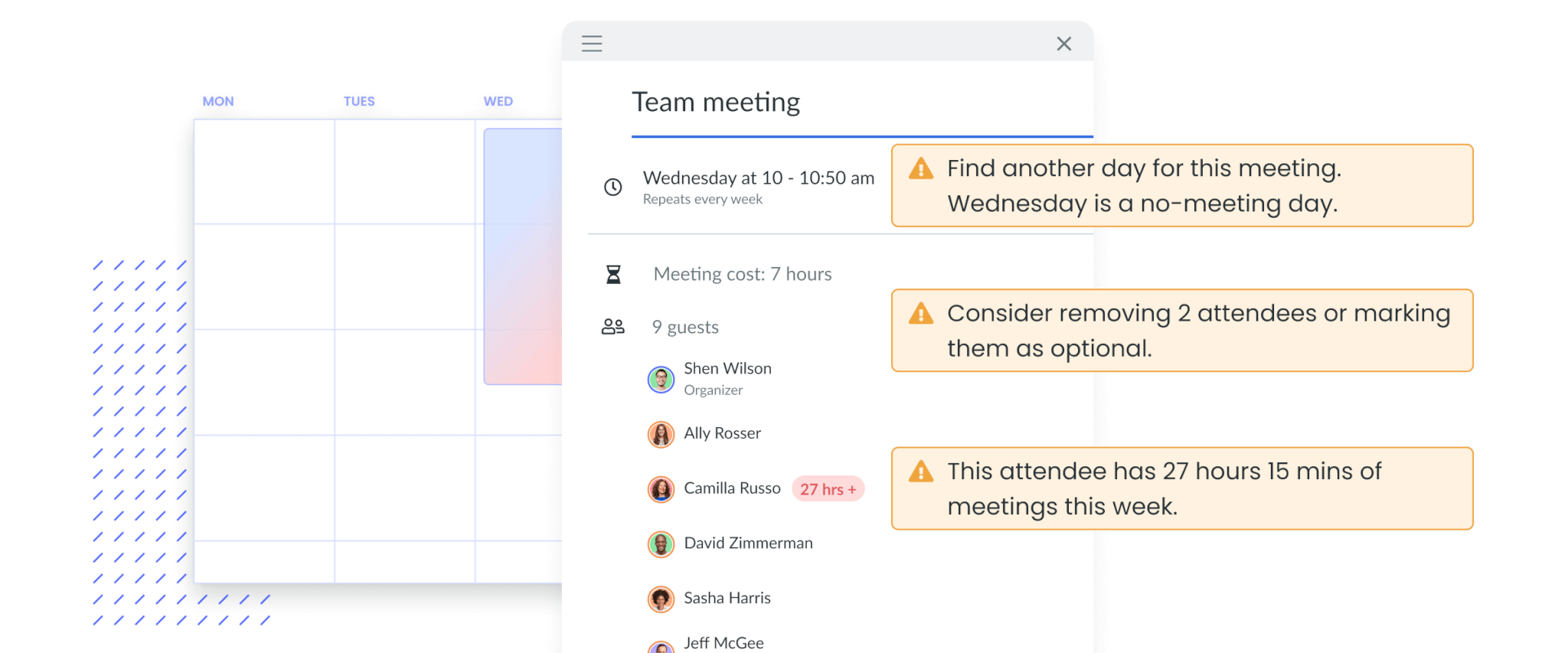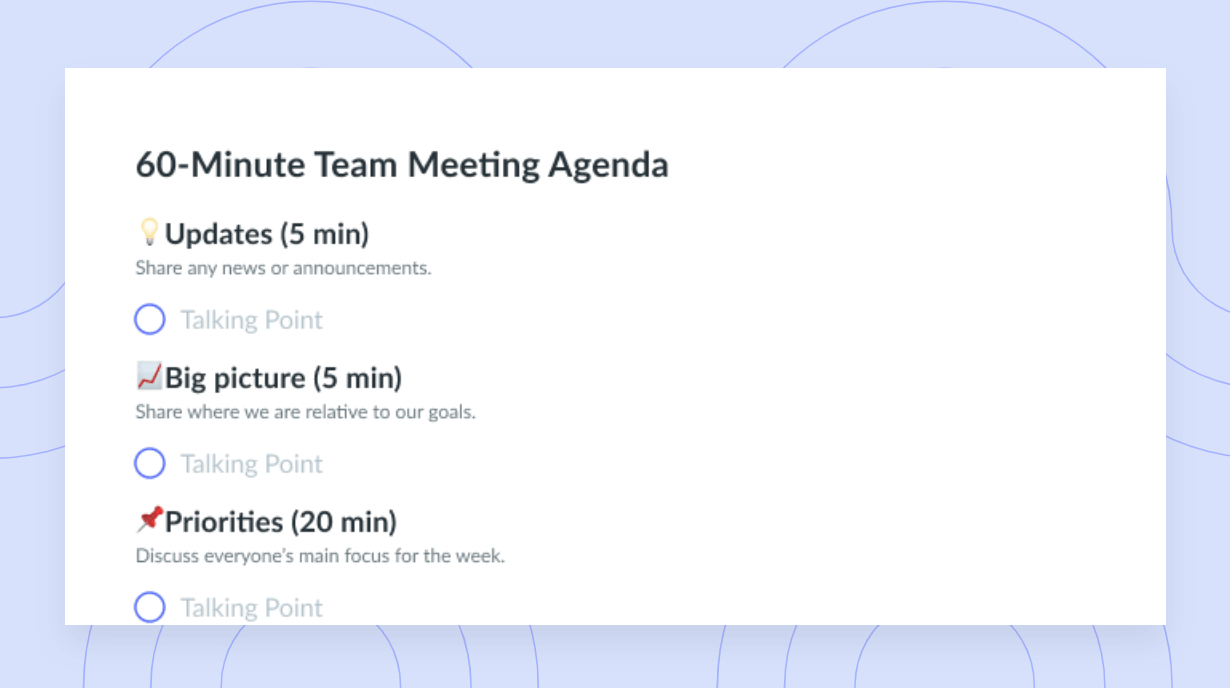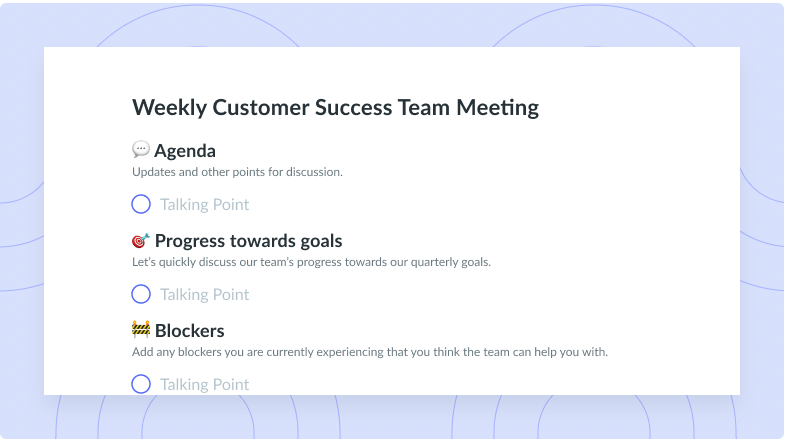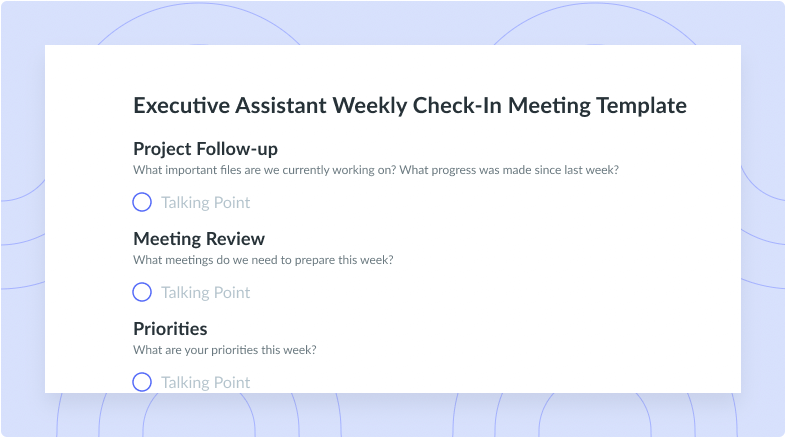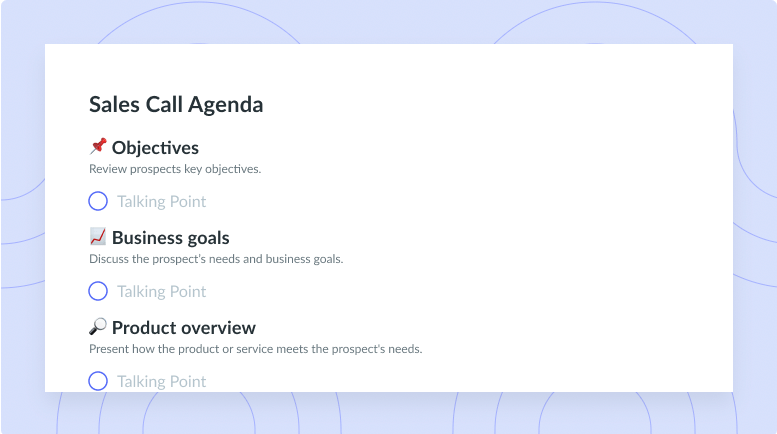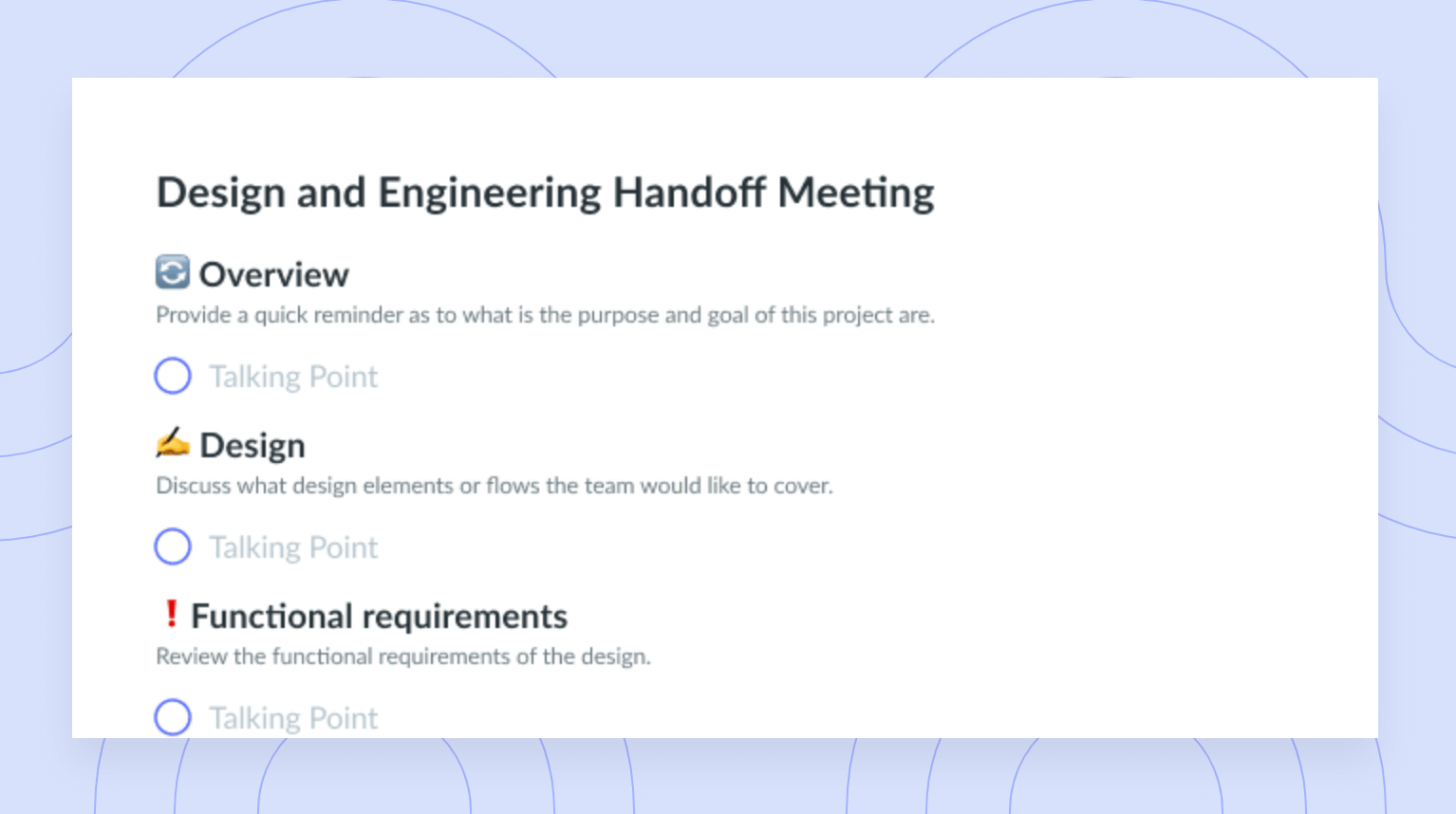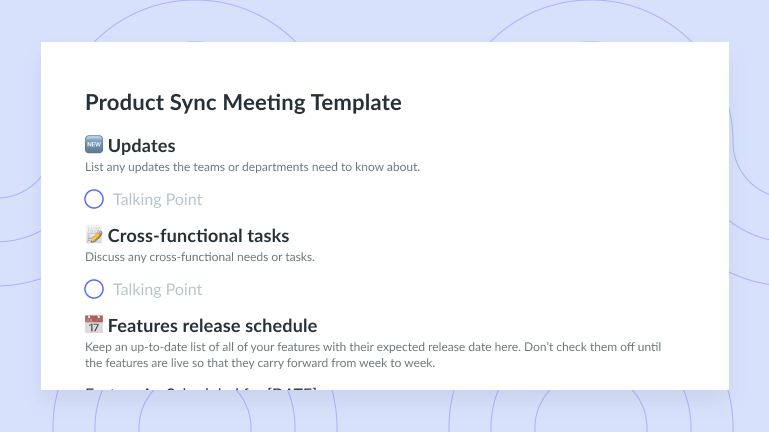The Easiest Way to Find a Time to Meet
If you’re leading a busy team, finding a time to meet can be a challenge. Use these tips for easy meeting scheduling!
Are you working in a team with busy calendars? If so, you know that trying to find a time to meet that isn’t too early, too late, or interrupting a focus period can be tough. Instead of scheduling your meetings months in advance to secure a time slot that works for everyone, test out a few of these tips to help you get your meeting time and goals locked in a lot sooner!
Tips for easily finding a time to meet
- Determine if a meeting is necessary
- Consider meeting alternatives
- Provide meeting details
- Leverage scheduling tools
- Consider time zones
- Prioritize key participants
- Have an end date for recurring meetings
- Be flexible
Determine if a meeting is necessary
You might not think meetings are costly, but they definitely come at a price. Add up the hourly salaries of all of your attendees or try out Fellow’s Meeting Cost Calculator to see how much your team is spending on each call.
To minimize your costs or avoid finding a time to meet, determine if a meeting is even necessary. Ask yourself and your participants what value a meeting would have compared to other options. Could another collaboration route get you to the same resolution within the same amount of time or less?

Spend less time in meetings
Enable thoughtful meeting creation and make room for execution with Fellow’s AI meeting summaries, time-saving templates, and meeting policy prompts.
Consider meeting alternatives
There are plenty of other ways to collaborate besides hosting a live meeting. For example, you could host an asynchronous meeting where team members have a set period of time (such as a day) to add notes and comments on a shared document. You could also opt to have the meeting asynchronously through chat tools, videos, or audio notes. Tools like Loom and VidYard are great for recording quick explanation videos that can be sent via email, so you don’t have to wait to explain and record information on a call.
Provide meeting details
There are a few more things to consider before you book your meeting time. For instance, you’ll need to have a clear meeting purpose and end goal for the conversation. For example, do you need a plan approved or a solution to a specific blocker?
In your meeting invite, include the purpose and meeting goals as well as any contextual information that will help participants know if they need to attend or not. If invitees see the purpose and recognize that they won’t be able to contribute to the conversation, they don’t need to come. It will be easier for you to find a time to meet with fewer people!
Leverage scheduling tools
Meeting time coordination is no easy task, especially when you’re looking at three or more calendars. Leveraging meeting scheduling tools can help you automatically find open times that work for everyone. Here are some tool options to consider:
- Doodle—this is a free tool that’s adaptable to many meeting purposes.
- When2meet—this tool is ideal for planning meetings with external stakeholders.
- Calendly—this tool allows flexibility for any booking.
- Chili Piper—this tool is great for booking inbound lead meetings.
- HubSpot’s Meeting Scheduler—This free tool by HubSpot easily integrates into your email outreach.
- Google Calendar—this is a free way to find a time to meet by viewing team members’ shared calendars.
- Microsoft Outlook—this tool is great for planning meetings with internal teams.
Consider time zones
If you’re working with people who don’t live in the same geographic area as you, it’s important to remember their time zones. Keeping this time difference in mind will help you avoid accidentally booking a meeting time in the early morning or middle of the night.
You can also prevent after-hours meetings by ensuring all team members set their designated office hours within their meeting planning tool. For instance, if your team members indicate their work hours in Fellow, the meeting guidelines feature will notify you when you try to book a meeting outside of their working window and remind you to schedule the meeting for a better time.
Prioritize key participants
Most meetings should have seven or fewer people (known as the Rule of 7). The exception is for meetings like town halls that require a bigger audience but take on more of a presentation format.
Limiting the number of attendees ensures everyone has enough opportunity to contribute without risking the meeting going overtime. Prioritize inviting people with decision-making power and new ideas to contribute to the meeting. Anyone who is only attending to listen can be provided with a recording of the call or the meeting transcription afterwards.
Have an end date for recurring meetings
Recurring meetings take up a lot of space in your calendar, especially if they happen on a weekly basis. Reduce the frequency of recurring meetings or ensure they have an end date. When the meeting end date comes up, you can speak with your attendees about the value they receive from the call and decide whether to continue with more sessions (or to get rid of them) together. This helps you be more intentional about how you spend your day.
Fellow CEO Aydin Mirzaee also says that being mindful of meeting duration is one of his recommended guidelines that can help improve employee productivity and make it easier to find a time to meet. Aydin says,
“In fact, an internal company experiment conducted at Fellow showed that scheduling meetings for shorter durations, specifically 50 minutes instead of 60 minutes and 25 minutes instead of 30 minutes, can greatly improve meeting efficiency and attendee focus on critical priorities.”
Be flexible
Understand that not everyone will be able to attend your call, no matter how hard you work to find a time to meet. Being flexible to different methods of hosting a meeting, such as leveraging asynchronous communication channels, is a great way to collaborate with your team without delaying your goals. This also means understanding when a meeting time needs to be rescheduled if an important participant is not able to join or the meeting purpose is no longer clearly defined or valuable.
Parting advice
Scheduling meetings effectively can help you find more opportunities to collaborate with your team. Being mindful of how and when you book meetings on your team’s calendar is important to ensure that everyone can be as productive as possible while also reducing the risk of context switching or burnout. When in doubt, make sure to circle back to your team and get continuous feedback about meetings. This feedback can help you identify which meetings no longer serve their purpose or which ones could be better optimized for higher results!
